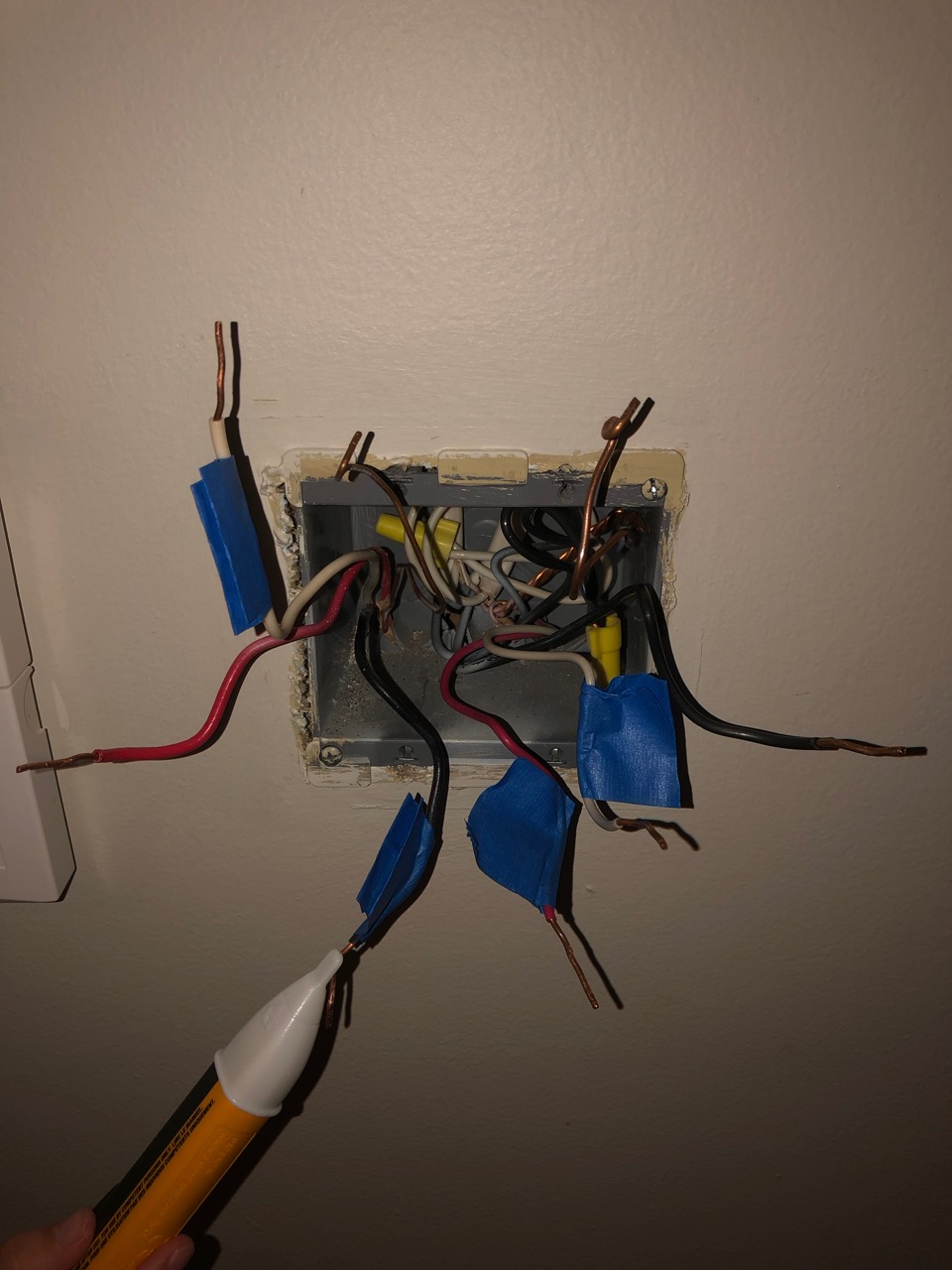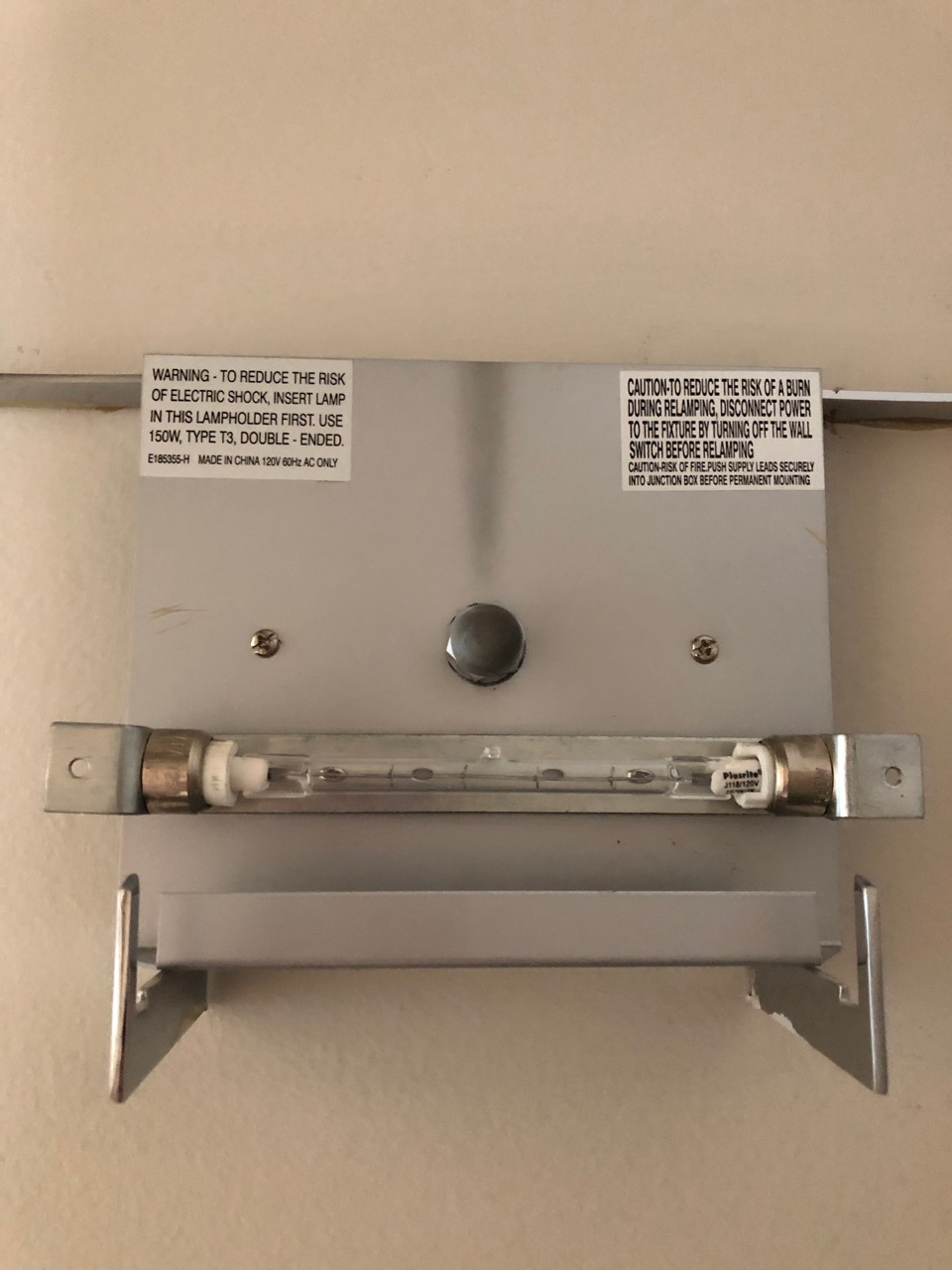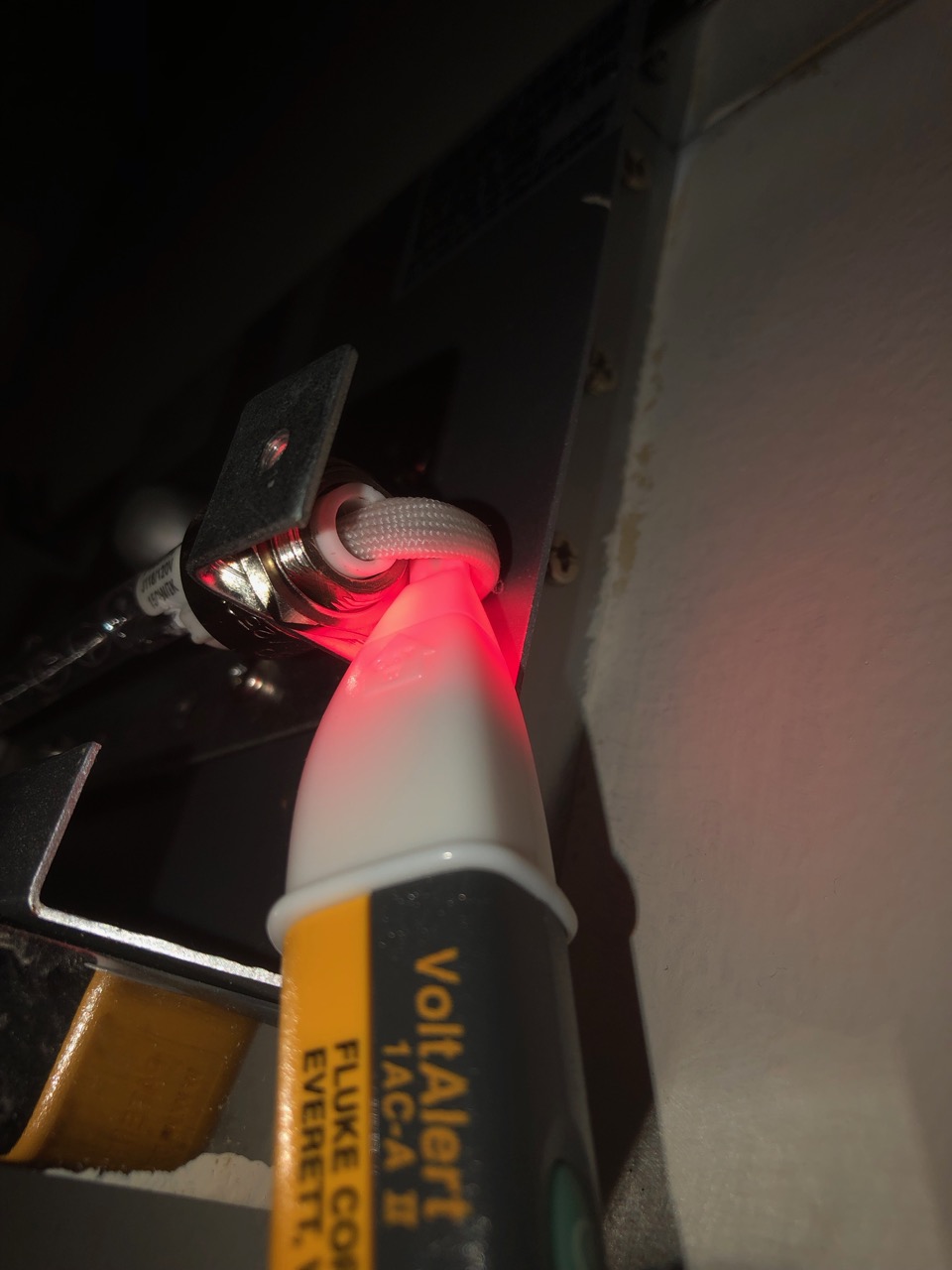I have a halogen light fixture that is powered by a three-way switch at the top of the stairs and another three-way switch at the bottom of the stairs. After I replaced both switches with new 3-way switches the light fixture stopped working.
The old switches were connected with black, white, and red wires and I replicated the same connections with the replacement switches. I used a voltage tester and turned off the breaker box switch before touching the wiring.
The light fixture has left and right ends that hold the small halogen light bulb. After several hours of testing the best outcome I can achieve is the right end outputting power but the fixture will no longer power the light bulb.
Here's some info:
- Located at the top of the stairs
- Bottom right black screw connected to black wire
- Top right bronze screw connected to red wire
- Left bronze screw connected to white wire
- Green screw connected to ground wire
- Removed the new switch, turned on the breaker box, and the voltage tester showed only the black wire is hot
- Tried replacing the new switch with the old one with no success
- Tried replacing the new switch with a couple other new switches with no success
- Located at the bottom of the stairs
- Bottom right black screw connected to black wire
- Top right bronze screw connected to white wire
- Left bronze screw connected to red wire
- Green screw connected to ground wire
- Both switches turned on shows black, red, and white wires are hot
- Removed the new switch, turned on the breaker box, and the voltage tester showed none of the wires are hot
- Tried replacing the new switch with the old one with no success
- Tried replacing the new switch with a couple other new switches with no success
- Using the above wiring and placing the voltage tester in each end of the bulb bracket shows the right end is hot but the left end is not
- None of the wiring connections below would power the fixture's bulb
- Uses a J Type 118mm Double Ended 120 Volts 150 Watt T3 Halogen Bulb
- Tried two different light bulbs
With this wiring I observed these results (only difference is the switch 2 red wire is hot or not):
- Switch 1 on and switch 2 on: both sets of black, white, and red wires are hot
- Switch 1 on and switch 2 off: switch 1 black, white, and red wires are hot and switch 2 black and white wires are hot and the red wire is not
- Switch 1 off and switch 2 on: both sets of black, white, and red wires are hot
- Switch 1 off and switch 2 off: switch 1 black, white, and red wires are hot and switch 2 black and white wires are hot and the red wire is not
I tried several different combinations of left and right bronze screws but none would power both ends of the fixture:
- Switch 1 left white and right red and switch 2 left white and right red
- Switch 1 left white and right red and switch 2 left red and right white
- Switch 1 left red and right white and switch 2 left white and right red
- Switch 1 left red and right white and switch 2 left red and right white
I tried removing the light fixture so I could check its wall wiring with the voltage tester but I started stripping one of its screws so I stopped.
A few questions:
- If all six wires are hot (black, white, and red on both switches) is the circuit complete?
- Should both ends of the light fixture's bulb compartment be hot when the circuit is complete?
- Could the left side of the light fixture have a blown fuse?
- When I get the fixture removed if I have a complete circuit will the black, white, and red wires be hot?
Anything else I can try?
New Photos
 ^ Left white wire is cold
^ Left white wire is cold
 ^ Left red (!) wire is hot
^ Left red (!) wire is hot
 ^ Left black wire is cold
^ Left black wire is cold
 ^ Right red wire is cold
^ Right red wire is cold
 ^ Right white wire is cold
^ Right white wire is cold
 ^ Right black wire is hot
^ Right black wire is hot
 ^ On the left, a working three way switch that powers three basement lights and, on the right, Switch 1
^ On the left, a working three way switch that powers three basement lights and, on the right, Switch 1
 ^ Close up of their wires
^ Close up of their wires
 ^ Traveler wires for the working three-way switch
^ Traveler wires for the working three-way switch
 ^ The top left black wire with the white jacket is tied off with the bottom right black wire (next to the stranded ground copper wires) and the switch 2 traveler wires exit through the bottom right of the box
^ The top left black wire with the white jacket is tied off with the bottom right black wire (next to the stranded ground copper wires) and the switch 2 traveler wires exit through the bottom right of the box
 ^ The ends of the two black wires from the previous photo twisted together with a yellow wire connector
^ The ends of the two black wires from the previous photo twisted together with a yellow wire connector
 ^ The fixture's right terminal is hot but the bulb is not working
^ The fixture's right terminal is hot but the bulb is not working
 ^ Upstairs right switch turned on and the fixture terminal's right wire is hot
^ Upstairs right switch turned on and the fixture terminal's right wire is hot
 ^ Upstairs right switch turned on and the fixture terminal's left wire is cold
^ Upstairs right switch turned on and the fixture terminal's left wire is cold
 ^ Tied off white neutral wires in the back of the box are hot with the switch on
^ Tied off white neutral wires in the back of the box are hot with the switch on
 ^ Fixture black wire is hot with the switch on
^ Fixture black wire is hot with the switch on
 ^ Fixture white wire is cold with the switch on
^ Fixture white wire is cold with the switch on




